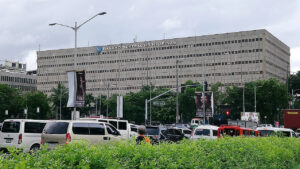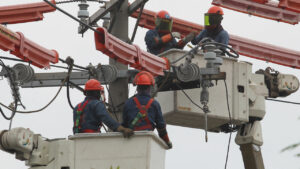[B-SIDE Podcast] PHL’s battle against fake news on West Philippine Sea

Follow us on Spotify BusinessWorld B-Side
China’s increased aggression in the South China Sea has made it more challenging for the Philippines, now regarded as an Asian middle power, to ignore the situation, an analyst said.
On Aug. 5, the Chinese Coast Guard, backed by its maritime militia and People’s Liberation Army ships, fired water cannons to block a resupply mission to a Philippine military outpost on Second Thomas Shoal. The shoal is located about 200 kilometers from the Philippine island of Palawan and over 1,000 kilometers from China’s nearest major landmass, Hainan Island.
China’s move prompted a diplomatic protest from the Philippines and statements of concern from countries including the US, Japan, Australia, South Korea and members of the European Union.
But China was quick to counter international backlash, with the Chinese Coast Guard accusing the Philippines of failing to honor a supposed promise to remove its grounded warship from the Second Thomas Shoal, which the Philippines calls Ayungin.
Don McLain Gill, a geopolitical analyst and international studies lecturer at De La Salle University, said that this propaganda is just one aspect of China’s complex strategy in the South China Sea, which aims to avoid direct military conflict.
In particular, China’s narrative on the World War II-era warship named BRP Sierra Madre is a form of psychological warfare that seeks to alter the status quo without the use of overt military force, he told BusinessWorld.
“Information, or disinformation, is a vital tool in altering the narrative on the South China Sea, or the West Philippine Sea in particular,” Mr. Gill said. “If you say something that is not backed by evidence, and you say it over and over again, every single day, you are bound to have people believe in what you are saying. You are bound to have some attractiveness.”
People who will believe in the narrative “will eventually take part in spreading the word — consciously or subconsciously,” the analyst added, “and it will eventually snowball.”
Mr. Gill said the Philippines needs to counter China’s influence operations by, among others, providing “legitimate information.”
Philippine authorities have already debunked China’s claim, with Mr. Marcos saying he was not aware of an agreement to remove BRP Sierra Madre from the Second Thomas Shoal.
“And let me go further, if there exists such an agreement, I rescind that agreement now.”
Mr. Gill said China’s provocative actions that stops short of a military confrontation will continue “until a significant cause will be placed on China’s multifaceted strategy.”
In deterring Chinese aggression, the Philippines needs to consider Beijing’s cabbage tactics, which refer to the strategy of seizing control of an island by surrounding and wrapping it in successive layers of Chinese naval and coast guard ships and fishing boats, said Mr. Gill, who noted that China is avoiding moves that could prompt Washington to invoke a 1950s mutual defense treaty with Manila.
The analyst cited the need for the Philippines to boost its defense partnerships with like-minded nations and expand its economic networks.
China is the Philippines’ largest trade partner, with their total trade amounting to $3.01 billion in April, according to the local statistics agency. Manila’s exports to China reached $772.47 million in the same month, while its imports from Beijing hit $2.26 billion.
The Southeast Asian nation also needs to conduct “consistent” joint patrols and military activities in the West Philippine Sea, Mr. Gill said. “The Philippines and its allies must push back by cementing the status quo in the South China Sea.”
“These must be done with utmost consistency and over a long period of time. The battle now will rely on patience and consistency — above anything else.” — Kyle Aristophere T. Atienza




